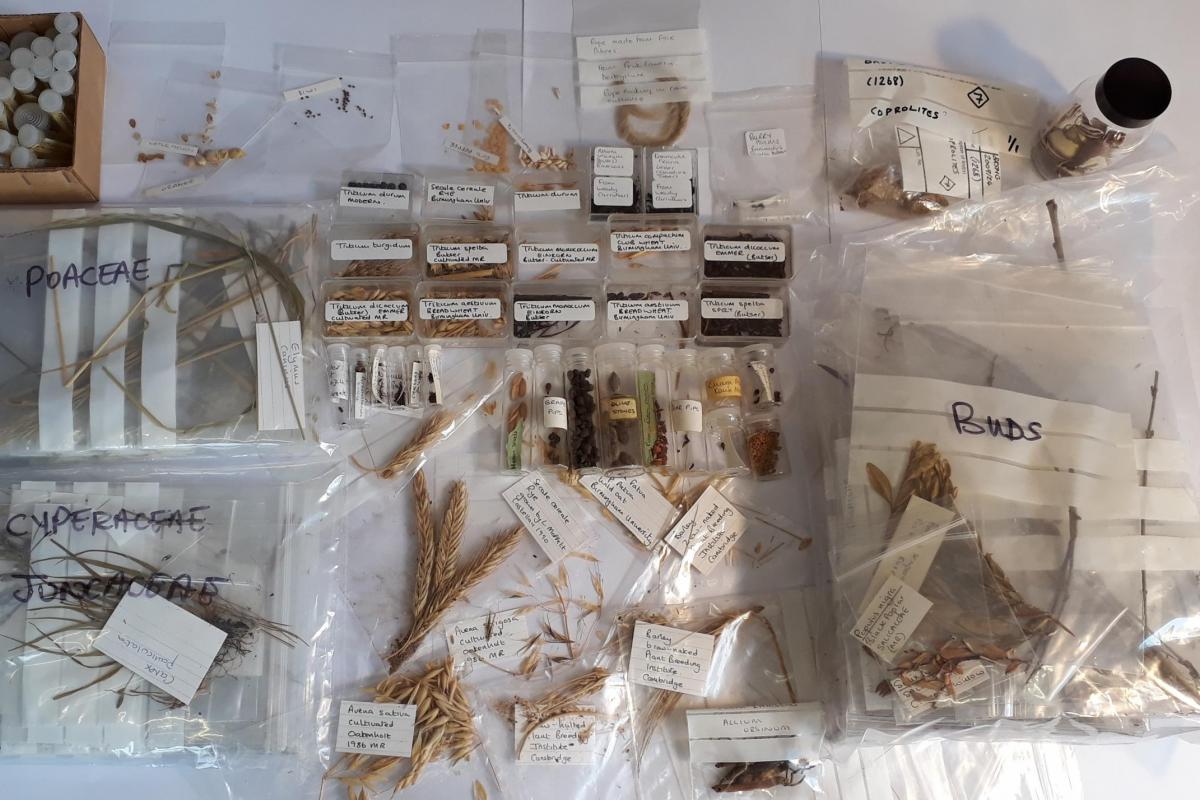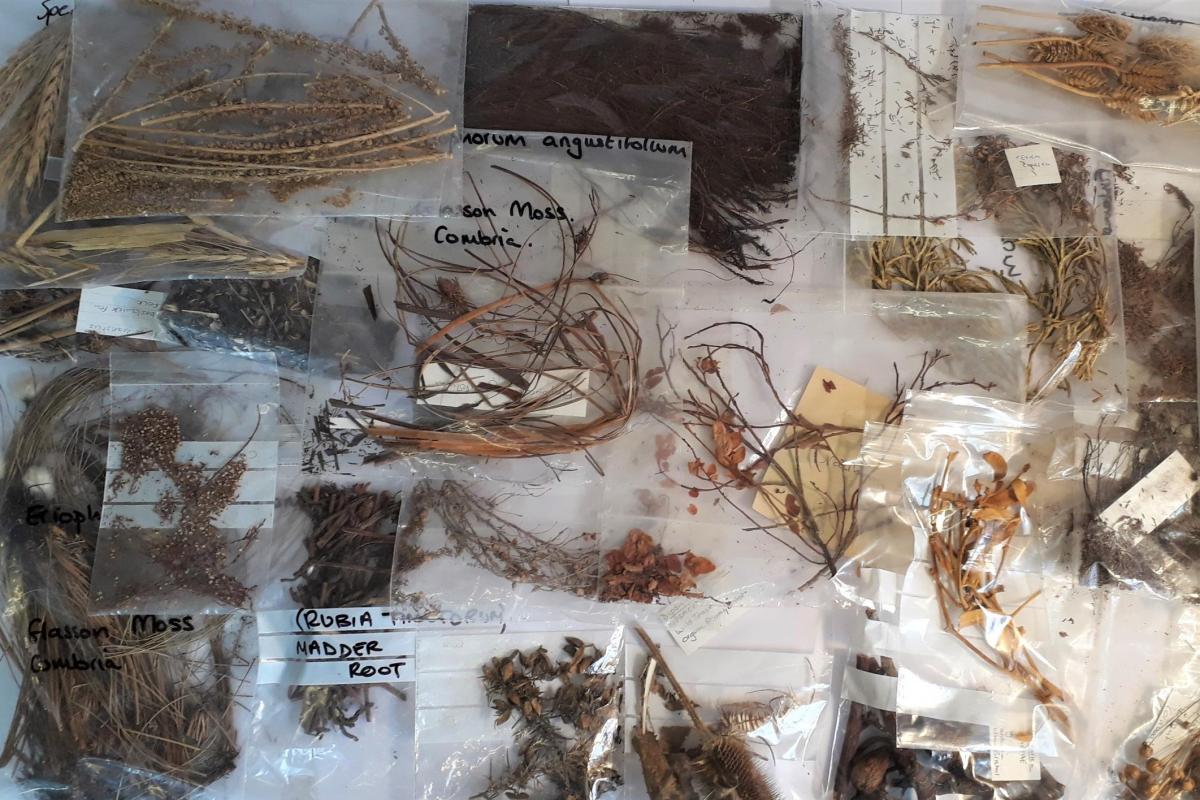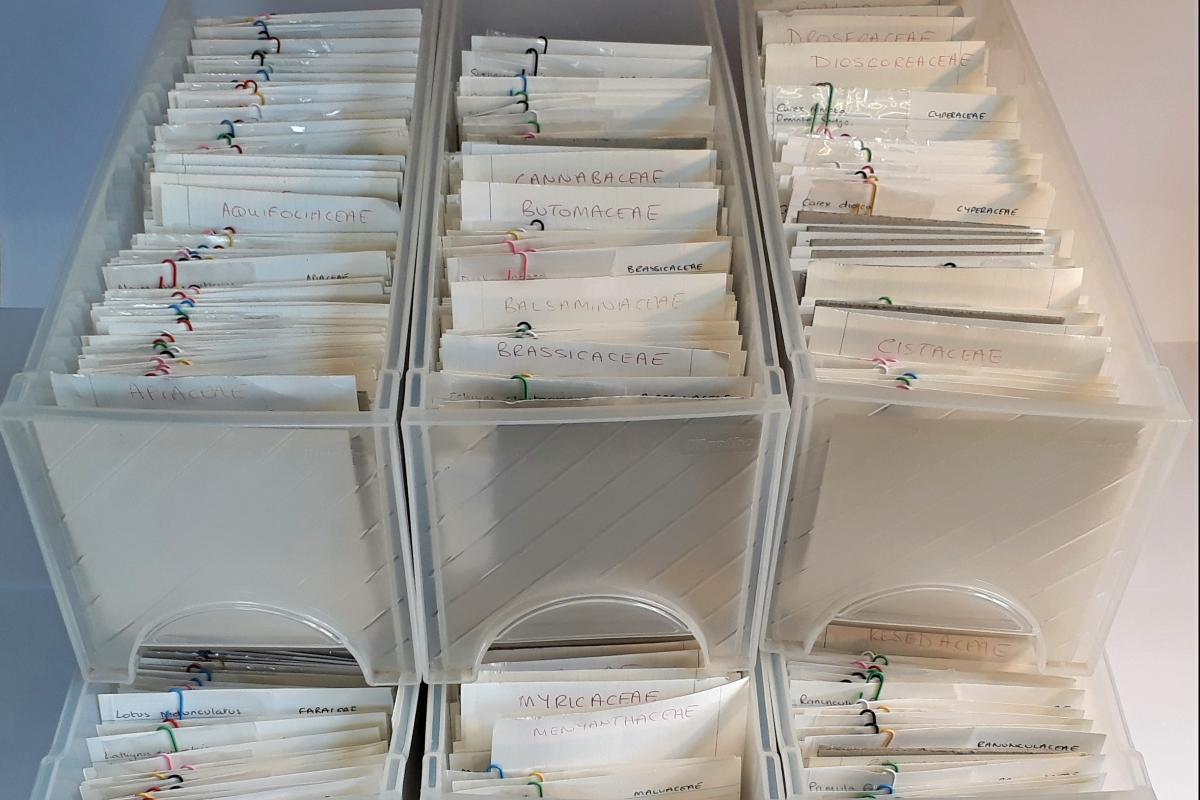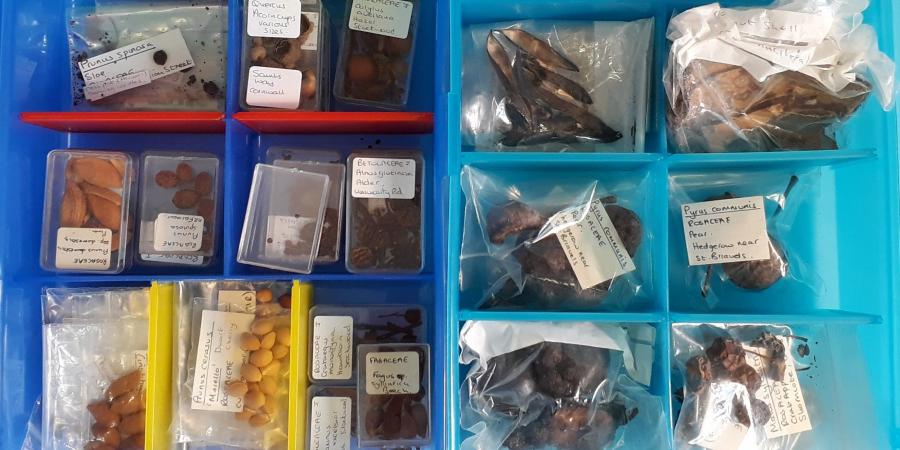In between report writing and sample assessment, we are currently immersed in the cataloguing of a new large addition to our reference collection, following a very generous donation from Julie Jones, formerly of Bristol City Museum.
Julie has now retired after many years of working in environmental archaeology in the South West and has left an important legacy, not only because of her undertaking of pioneering work in areas where we are now working, but because she has also chosen us to be the recipients of her more than >600 specimen macrobotanical reference collection, as well as her smaller reference collection of land snails.
It is a real privilege for us to be gifted with these invaluable donations and we are thrilled to be able to keep Julie’s collections in active use. A thorough collection of material for comparison is essential for the correct identification of bioarchaeological remains during the course of environmental analyses; unfortunately, there is no straightforward way of acquiring a reference collection and the process of creating one is both laborious and never-ending.


In the case of seeds, it involves browsing seed catalogues in search of particular taxa from seed suppliers and botanical gardens and collecting specimens upon field visits. Seed atlases can be bought, and seed drawing and pictures can be found in many publications, but there is nothing like direct comparison between specimens under a microscope. A “complete” reference collection cannot exist, as even if the whole list of taxa found in a given area was obtained, local or climatic differences that affect the size or shape of a specimen would justify having duplicates of the same taxon.
At Wessex Archaeology, we already had seed and snail reference collections which were started many years ago but are always being added to - Julie’s collection is a very significant addition to it, which will contribute to our work and help us train upcoming specialists for years to come.
In addition to her reference collections, Julie has also donated us reference books and technical equipment that will be used in our growing department and in community engagement events. Thank you very much, Julie! We wish you all the best in your well-deserved retirement.

